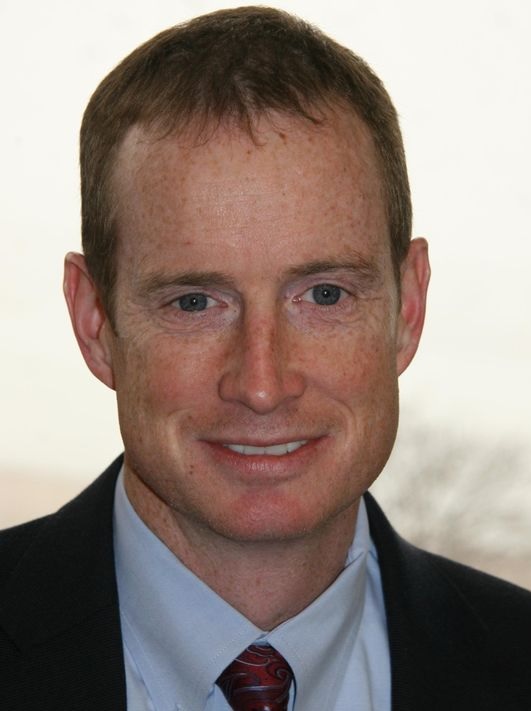Prosecutor: Public safety should be top priority in prison reform

Michigan’s Constitution states, “All political power is inherent in the people. Government is instituted for their equal benefit, security and protection.” As Michigan continues to look at reforms in important areas of the criminal justice system, public safety and security must be the first priority.
The Michigan Department of Corrections (MDOC) is already a national leader in using innovative methods and programs to develop the best possible corrective solutions. Michigan has prudently reduced its prison population from 51,454 in 2006 to 43,704 inmates in 2013. Of those remaining, approximately 70 percent of those inmates are still in prison for violent offenses.
The reduction of 8,000 inmates indicates Michigan is ahead of the curve in this respect; we have recognized what other states are just beginning to recognize ‒ that limited bed space needs to be reserved for the worst offenders that are detrimental to public safety.
When examining Michigan’s prison population, it is important to know that only 10 percent of felons are sentenced to prison initially in Michigan. The other 90 percent of all felons are sentenced to jail or diversion programs, such as probation and/or special programming. Because Michigan sends only its most violent or habitual criminals to prison, its sentences tend to be longer than those from states where the commitment rate may approach 40 percent.
More coverage: Michigan prison reform gaining momentum in fall session
Under our current sentencing guidelines, many of these violent criminals are not going to prison. For example, in 2013, 235 people who were convicted of assault with intent to do great bodily harm less than murder were not sent to prison.
Contrary to a continuing misconception, Michigan prisons are not clogged with drug offenders. MDOC numbers reveal that only 7.7 percent of Michigan prison beds are used for drug offense violators. Most of those are habitual, major controlled substance trafficking crimes.
The 2013 MDOC Statistical Report confirms that in 2013 less than .03 percent of Michigan prisoners were marijuana law violators.
The bottom line is that our current guidelines make it nearly impossible for nonviolent offenders ‒ and even many violent offenders ‒ to go to prison.
Comparing Michigan’s prison population to other states must be done with a care and understanding that Michigan is unique. We are one of the most violent states in the country, with four core cities that see more violent crime than most others in the nation. What works in another state may not work here. We are an outlier when it comes to these statistics and comparisons.
Recent U.S. Department of Justice-Federal Bureau of Investigation statistics placed Michigan’s violent crime rate at 16.8 percent above the national average and 39.6 percent higher than the average of other Midwest states. Michigan has a violent crime rate that is a staggering 55.8 percent higher than Ohio.
We must also recognize that our state lost over 17 percent of its law enforcement force over the past decade. This directly contributes to the unfortunate reality that Michigan is a violent state which solves only 31.6 percent of its violent crimes compared with the national average of 46 percent. We have a 40 percent murder clearance rate compared to a national average of 64 percent, according to the FBI.
Accordingly, when you are forced to lock up murderers, rapists and other violent criminals, they will stay in prison much longer than a state which uses the majority of their prison allotment for auto thieves, safe breakers, drug offenders and other serious, but “nonviolent” criminals.
The public and private sector efforts that help reduce recidivism are important. Local options are part of the solution. Treatment courts, truancy and community stabilization energies can be part of the answer.
But we cannot prioritize dollars over public safety. Doing so erodes the integrity of the system that we’re trying to improve. We cannot compromise the confidence of our victims of crime who continue to go through traumatic experiences by releasing prisoners who threaten public safety.
Michigan’s prosecuting attorneys will continue to partner with Gov. Rick Snyder and the Michigan Legislature in efforts to review our sentencing provisions and to protect our public.
See what new members are saying about why they donated to Bridge Michigan:
- “In order for this information to be accurate and unbiased it must be underwritten by its readers, not by special interests.” - Larry S.
- “Not many other media sources report on the topics Bridge does.” - Susan B.
- “Your journalism is outstanding and rare these days.” - Mark S.
If you want to ensure the future of nonpartisan, nonprofit Michigan journalism, please become a member today. You, too, will be asked why you donated and maybe we'll feature your quote next time!
 Mike Wendling is the St. Clair County Prosecuting Attorney and president of the Prosecuting Attorneys Association of Michigan
Mike Wendling is the St. Clair County Prosecuting Attorney and president of the Prosecuting Attorneys Association of Michigan